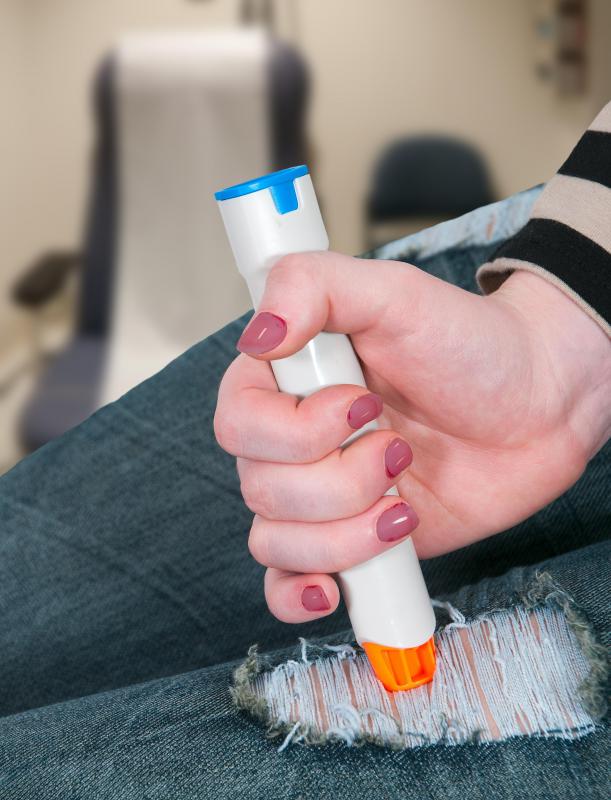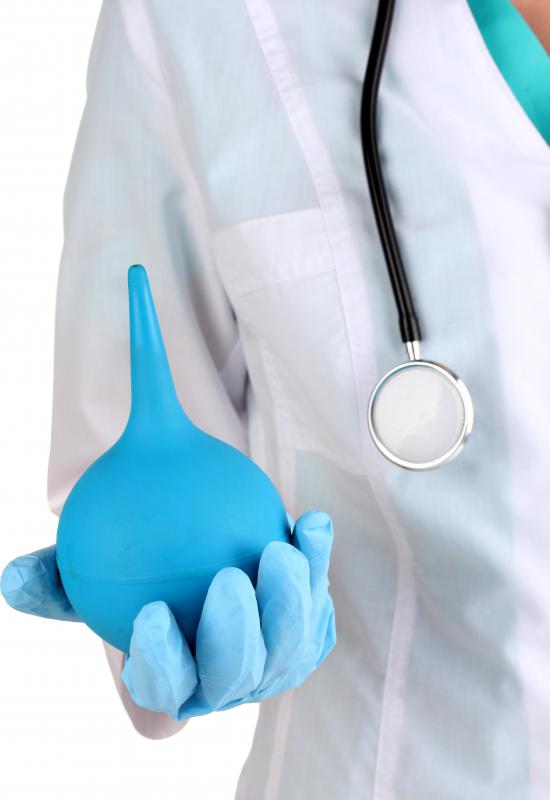At TheHealthBoard, we're committed to delivering accurate, trustworthy information. Our expert-authored content is rigorously fact-checked and sourced from credible authorities. Discover how we uphold the highest standards in providing you with reliable knowledge.
What is a Prefilled Syringe?
The prefilled syringe is a relative newcomer to the syringe market. Up until the 1980s, this medication delivery method, which includes the factory filling of syringes with different medicines, was not that common. Since the 1980s, though, demand has increased for convenient device, which eliminates the need to draw up medicine into a syringe, and thus improves speed at which certain medications can be given. It can also increase accuracy in dosing, since medicine in the prefilled syringe is expected to be the same with each dose. There are now many vaccines that are available in prefilled forms and some medicines for home use also are obtainable, which many feel helps takes some of the guesswork out of home injections for people who must self-inject medications.
The average prefilled syringe contains medicine in a plastic cartridge and has a plastic cap to cover the needle and prevent accidental needle sticks. It’s important to follow specific protocol on injections, but it can be said that the majority of these syringes are single use. This means they’re immediately discarded after injecting the medication.

It bears repeating that these syringes are usually not approved for reuse of any kind. As with any needle disposal methods, medical personnel and medical laypeople must discard the syringe in an approved manner. People who self-inject may need to bring syringes back to a doctor or pharmacist for safe disposal; syringes should never go into the trash.

Some common types of prefilled syringe for home use include those that contain medicines like insulin. Another medicine very often carried by those with severe allergies is epinephrine, and though the injection method is slightly different, things like the Epi-pen® are a good example of a prefilled syringe. Medical supplies and medicine manufacturers note increasing demand for syringes that come prefilled. This means if an injectable medicine is not available now, it could be in the future. Newer pre-filled variants may also exhibit other changes like ability to inject medicine without using a needle.

Perhaps the most distinct advantage to the prefilled syringe is that it is unnecessary to use an accompanying vial to draw up medication. Since drawing up is not always precise, people may have to waste some medicine because they’ve overdrawn. There are more concerns, too, that in this process air bubbles may enter the syringe, and there exist definite problems with accidentally injecting too much medication or not getting enough with each dose.

There are advantages to the draw method. It may be easier to store medicines more securely. Lots of prefilled syringes have to be refrigerator stored, where they may be easily accessible to young children, which poses a serious danger. From a practical standpoint, storing multiple syringes in the fridge can simply take up a lot more room, whereas unfilled syringes and vials might be safely stowed out of the way in a cabinet without using up refrigerator space.
AS FEATURED ON:
AS FEATURED ON:
















Discussion Comments
@Phaedrus, I had a friend who was deathly allergic to bee stings, and I remember what he had to go through if he ever got stung. He'd start coughing and wheezing, then try to tell other people to get help for him. One time the school had to call an ambulance and he almost died waiting for someone to draw up an epinephrine shot. It scared me to death as a kid. Now he carries around a prefilled syringe and can stick himself in the leg if he ever gets stung.
One good thing about a prefilled syringe is that the person can use it right away, no matter what state of mind they're in. A diabetic who is going low can get very confused and shaky, so the last thing he or she wants to do is take time to draw up insulin from a bottle and try to get a perfect dose. Getting that medicine into their system quickly can make a difference between recovery and blacking out. I think it's great that these pre-loaded syringes are now available to anyone with a prescription.
Post your comments